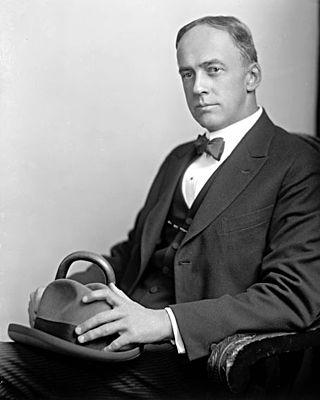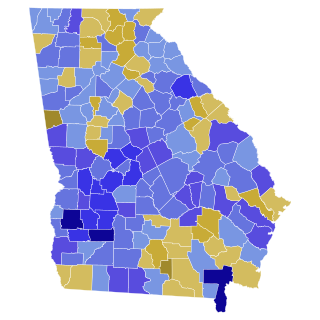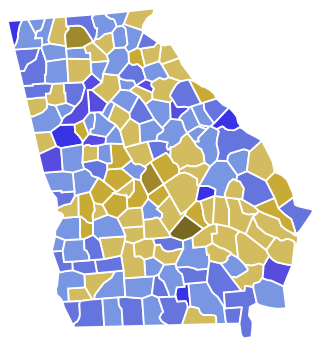
The 1954 Georgia gubernatorial election was held on November 2, 1954.

The 1950 Georgia gubernatorial election was held on November 7, 1950. Incumbent governor Herman Talmadge won the Democratic primary over Melvin Thompson on June 28 with 49.33% of the vote and 295 out of 410 county unit votes. The primary was a rematch of the 1948 special election. This would be the last gubernatorial rematch in the state until 2022.

The 1948 United States Senate election in Georgia took place on November 2, 1948. Incumbent Democratic U.S. Senator Richard Russell Jr. was re-elected to a fourth term in office.

The 1942 United States Senate election in Georgia took place on November 3, 1942. Incumbent Democratic U.S. Senator Richard Russell Jr. was re-elected to a third term in office.

The 1936 United States Senate election in Georgia took place on November 3, 1936. Incumbent Democratic U.S. Senator Richard Russell Jr. was re-elected to a second term in office after first being elected in the 1932 United States Senate special election in Georgia.

The 1956 United States Senate election in Georgia took place on November 6, 1956. Incumbent Democratic U.S. Senator Walter F. George did not run for re-election.

The 1950 United States Senate election in Georgia took place on November 7, 1950. Incumbent Democratic U.S. Senator Walter F. George was re-elected to a sixth term in office.

The 1954 United States Senate election in Georgia took place on November 2, 1954. Incumbent Democratic U.S. Senator Richard Russell Jr. was re-elected to a fifth term in office.

The 1960 United States Senate election in Georgia took place on November 8, 1960. Incumbent Democratic U.S. Senator Richard Russell Jr. was re-elected to a sixth term in office.

The 1922 Georgia gubernatorial election took place on November 7, 1922, in order to elect the governor of Georgia.

The 1924 Georgia gubernatorial election took place on November 4, 1924, in order to elect the governor of Georgia.

The 1926 Georgia gubernatorial election took place on November 2, 1926, in order to elect the governor of Georgia.

The 1928 Georgia gubernatorial election took place on November 6, 1928, in order to elect the governor of Georgia.

The 1930 Georgia gubernatorial election took place on November 4, 1930, in order to elect the governor of Georgia.

The 1932 Georgia gubernatorial election took place on November 8, 1932, in order to elect the governor of Georgia.

The 1934 Georgia gubernatorial election took place on November 6, 1934, in order to elect the governor of Georgia.

The 1936 Georgia gubernatorial election took place on November 3, 1936, in order to elect the governor of Georgia.

The 1938 Georgia gubernatorial election took place on November 8, 1938, in order to elect the governor of Georgia.

The 1940 Georgia gubernatorial election took place on November 5, 1940, in order to elect the governor of Georgia.

The 1942 Georgia gubernatorial election took place on November 3, 1942, in order to elect the governor of Georgia. The governor was elected to a four-year term for the first time, instead of a two-year term.
















